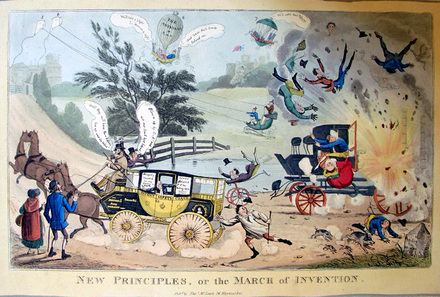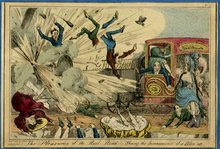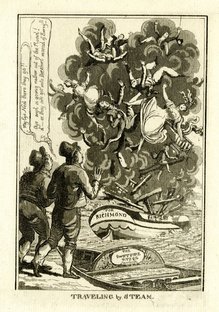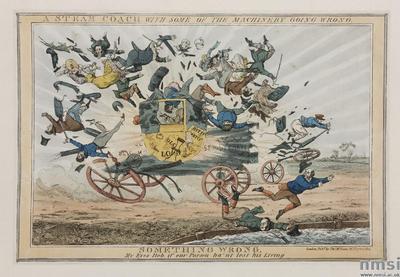In the early 19th century, exploding steam engines were responsible for many deaths. Artists and print dealers throughout London seized on these colorful spectacles, with clouds of smoke and body parts, to make a series of comic prints.
British inventor Walter Hancock (1799-1852) designed and constructed steam powered cars. He patented a steam boiler in 1827 that would split rather than explode so that the passengers being carried on his steam vehicles would be able to travel in safety. In 1831, with a ten-seater called the Infant, Hancock began a regular commercial bus service between Stratford and London. The bus was ultimately lost during an explosion.
In another tragedy, reported by the Manchester Guardian, “the inhabitants of Camberwell were thrown into great consternation by a shock so tremendous that it broke the glass in many houses. It resulted from the baneful practice of using high pressure steam engines. One of these engines was erected at the new glue manufactory of Messr.
Cleaver and Yardley, on the banks of the Surrey canal, at the back of the Albany road; and when at 38 degrees it burst, causing a terrific explosion! The whole north wing of the building was blown down’ five of the workmen received dreadful fractures, and two were killed on the spot.”—- “Bursting of a Steam Boiler,” The Manchester Guardian, September 28, 1822.



